
Tudor history events for the week beginning 3rd November.
[Read More...]This week in history events for 6th to 12th October.
[Read More...]
As it is the end of 2021, we will look back at all the months and highlight the most exciting event, release, article or video. But we will also look forward to next year and update you on all the new things coming.
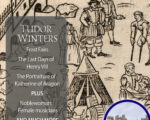
What a wonderfully interesting magazine we have for you this cold winter month. Hopefully, you’re able to stay wrapped up warm while you enjoy the latest copy of Tudor Life Magazine
[Read More...]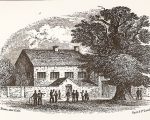
In today’s “on this day in Tudor history” video, I share the story of William Hunter, a nineteen-year-old apprentice whose trouble started when he was caught reading the Bible to himself in church.
William ended up being burned at the stake for heresy on 26th or 27th March 1555 in his hometown of Brentwood Essex.
[Read More...]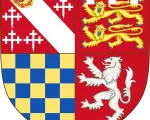
Lord Edmund Howard was born in around 1478 as the third son of Thomas Howard, 2nd Duke of Norfolk, and his first wife, Elizabeth Tilney, Countess of Surrey. Edmund came from a successful family; his father having served under four monarchs. During the tumultuous Wars of the Roses period, Edmund’s father supported the Yorkists, serving both Edward IV and Richard III. Thomas Howard was awarded the Earldom of Surrey in 1483, alongside being appointed to the Privy Council and becoming an invested member of the exclusive Order of the Garter. Upon Richard III’s defeat at the Battle of Bosworth in 1485, the Earl of Surrey was imprisoned for a period and stripped of his honours as a result of his treasonous actions against the newly established Tudor throne. The now King Henry VII was discerning in his prevention of Surrey’s execution; intent on proving himself a merciful monarch in the wake of decades of factional brutality. Henry was later reassured that Surrey was a loyal servant and restored his earldom in May 1489. Similarly, the earl regained his position in society, taking up the role of Lieutenant of the North until 1499. From this point onwards, Surrey became a valued, trusted and loyal man to the Tudor crown; with his forces decimating the Scottish forces at Flodden in 1513. A year later, he was granted the title of Duke of Norfolk, one of England’s preeminent titles; which came with significant lands and annuities. When the duke died in 1524, his funeral was attended by a significant number of exclusive guests who congregated at Framingham Castle to pay their respects to a hugely influential figure at the Henrician court.
[Read More...]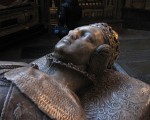
Frances (née Brandon) was the eldest daughter of Charles Brandon, Duke of Suffolk, and his third wife, Mary Tudor, sister of Henry VIII and widow of Louis XII of France. It is worth examining Frances’s parents and their significance within Tudor society before moving onto her life. Her father was an extraordinary character: magnate, courtier, and soldier, he exemplified the ideal qualities associated with being a male sixteenth-century courtier. Having been a close confidant to Henry VIII throughout his childhood, Suffolk found military fame in 1512 as a result of his involvement with the Anglo-French war. This war led to a successful siege of the French town of Tournai, with the inhabitants essentially forced to surrender to the invasion of the English king. As a result, Henry passed the keys of the city to Suffolk as a result of his honour and bravery.
[Read More...]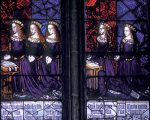
King Edward IV married the Lancastrian widow Elizabeth Wydeville [Woodville] in the spring or summer of 1464. In nineteen years of marriage, Elizabeth gave birth to ten children, seven of whom were daughters. The eldest daughter Elizabeth, born in 1466, remains the most well known in popular and scholarly circles and Edward IV’s other four daughters are significantly neglected both in factual and fictional accounts of their lives. The emphasis on Elizabeth and the neglect of her sisters are perhaps understandable, in that Elizabeth married Henry Tudor in 1485 and gave birth to Henry VIII in 1491. A queen of England undoubtedly attracts more attention than a countess or viscountess. Yet the lives of Elizabeth of York’s younger sisters are interesting in shedding light on the marriage policies of the houses of York and Tudor in an era of intermittent dynastic and political conflict. They also illuminate the contrasting fortunes of members of a side-lined royal dynasty.
[Read More...]
Here is the full version of our 86-page January edition of Tudor Life Magazine. This month we have many articles about this fascinating king – all the way through to his final days.
[Read More...]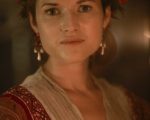
Thank you to historian and author Conor Byrne for writing this article for us.
Jane Parker was the daughter of Henry Parker, Baron Morley, and Alice St John. Her birth date is unknown, but her marriage took place in late 1524 or early 1525 when she would have been at least twelve years of age, the earliest age permitted for females to marry. Since she accompanied Katherine of Aragon as an attendant to the Field of Cloth of Gold in 1520, and appeared at a court masque two years later, it is probable that she was born no later than 1507 and probably by about 1505. Her highly educated father was a gentleman usher to Henry VIII. From her teenage years, Jane resided at court and lived in some luxury; her belongings included sleeves and apparel of rich fabrics, jewellery and plate.
[Read More...]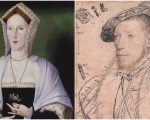
On this day in history, 14th August, two prominent Tudor people were born: Margaret Pole, Countess of Salisbury, in 1473, and William Parr, Marquis of Northampton, in 1513.
Margaret Pole, Countess of Salisbury, born on 14 August 1473, was the only surviving daughter of George, Duke of Clarence, and his wife, Isabel Neville. She was the niece of Edward IV and Richard III, and cousin of Elizabeth of York, Henry VII’s consort. Her brother, Edward, Earl of Warwick, was executed by Henry VII in 1499 in response to a request forwarded by the Spanish monarchs during the marital negotiations between Arthur, Prince of Wales, and Katherine of Aragon, since they feared that Warwick’s presence would encourage rebellion against the Tudor dynasty.
[Read More...]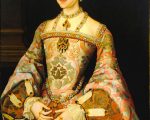
Born around 1512 to a family of gentry status, Katherine was the oldest daughter of Sir Thomas Parr, a late fifteenth-century courtier and knight. Her mother was Maud Green, a close friend and lady in waiting to Henry VIII’s first wife, Katherine of Aragon. The Parrs were a substantial northern family, with Thomas Parr tracing his ancestry to Edward III. Parr was a well-respected man and enjoyed the patronage of the young Henry VIII, who in 1515 sent him to Newcastle to escort his sister, the Princess Margaret, on her month-long progress south to London. Reports suggest he was charming and gallant, with the princess finding him particularly desirable; he soon became a favourite at Henry’s court. Upon his death in 1517 he left portions of £400 (£140,000 in modern value) to his two daughters, with a considerable amount more remaining for his son William.
Without the presence of a male figure in what was a patriarchal period, Maud was dealt the challenging duty of raising her children while maintaining a presence at court. Throughout these challenges, Maud was successful; she managed her estates and finances accordingly, oversaw her children’s education and arranged suitable unions for them befitting their status and marriageability.
[Read More...]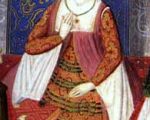
Thank you to regular contributor Heather R. Darsie for writing this introduction to the women of the House of Trastámara.
When thinking about the important players of the Renaissance, particularly during the reign of Henry VIII of England, one recalls the powerful families of the English Tudors, French Valois, and Burgundian Habsburgs. The family that is even more influential, even if quietly, is the overlooked Trastámaras of Spain. This family married into the Tudor, Valois, and Habsburg families, among others, and its reach was far. Who were they?
[Read More...]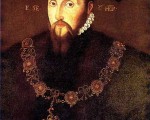
The fifth article in Sarah Bryson’s series on prominent Tudor courtiers…
Edward Seymour, Duke of Somerset is one of the most well-known of Henry VIII’s courtiers. Although the duke was most influential under the reign of his nephew, King Edward VI, it was during the reign of Henry VIII that Seymour started his ascent at the Tudor court.
The exact date of Edward’s birth has not been recorded, but it is believed that he was born around 1500 at the family’s home of Wolf Hall, Wiltshire, to Sir John Seymour and Margery Wentworth. John and Margery had ten children: six sons (John, Edward, Henry, Thomas, John and Anthony) and four daughters (Jane, Elizabeth, Margery and Dorothy). Edward Seymour was descended from the ancient family lines of the Percys and Cliffords, and his father served both King Henry VII and King Henry VIII as Sheriff of Wiltshire and Sheriff of Somerset and Dorset, cementing the family’s loyalty to the Tudors.
[Read More...]
 Here is a reminder of our expert live-chats programme for today's Tudor Society Open Day. Just head on over to the https://www.tudorsociety.com/opendaychatroom/ at the following times to get asking your questions and discussing these Tudor people and topics. We hope you enjoy it and a big thank you to all of these historians and authors.
Here is a reminder of our expert live-chats programme for today's Tudor Society Open Day. Just head on over to the https://www.tudorsociety.com/opendaychatroom/ at the following times to get asking your questions and discussing these Tudor people and topics. We hope you enjoy it and a big thank you to all of these historians and authors.
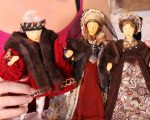
I quite often receive questions about the dolls I have on my bookcase and Margaret asked if I would do a Claire Chats video on them, explaining how/where I got them. So, here you go! My collection is all down to my dear friend Dawn Hatswell – thank you Dawn!
[Read More...]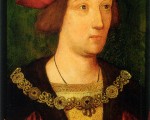
On 2nd April 1502, Arthur Tudor, eldest son of King Henry VII, died at Ludlow Castle. He was just fifteen years old and had been married for less than five months.
Arthur Tudor had married Katherine of Aragon, daughter of King Ferdinand II of Aragon and Queen Isabella I of Castile. King Henry VII had worked hard for several years to secure a marriage between his son and Princess Katherine to see a strong alliance created between England and Spain. The marriage would also help to put England on the international stage and secure the succession of the Tudors.
[Read More...]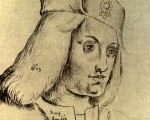
On 23rd November 1499, Perkin Warbeck faced his death at Tyburn. He was sentenced to be hanged until he was dead. His crime was attempting to escape the Tower of London where he was held a prisoner, but his story goes back several years and involves a tale of deception, treason and rumours of a young Prince come back to life!
[Read More...]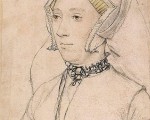
Born on the 22nd March 1519, Katherine Willoughby was the daughter of William, 11th Baron Willoughby, and his wife Maria De Salinis, one of Queen Katherine of Aragon’s ladies. When Katherine was just seven years old. her father died and with no male son surviving Katherine was his heir. In March 1528 Charles Brandon bought the wardship of Katherine from the King for a staggering £2,266 13s 4d with the intention of marrying Katherine to his son Henry. Katherine then came to live with the Brandons to be raised.
Charles Brandon’s third wife, Mary Tudor, Queen of France, died between seven and eight o’clock in the morning on the 25th June 1533. Her funeral was held on the 20th July 1533 at Bury St Edmunds. Katherine attended the funeral and she and her mother brought forward palls of cloth of gold to the altar.
[Read More...]
We tend to think of her as the woman who comes from nowhere, she’s not. In many ways she’s the most interesting, the most exciting, the best educated, and the cleverest of Henry’s wives. -David Starkey
Katherine Parr has been remembered through history as King Henry VIII’s sixth and final wife. The fortunate wife that survived. She has been labelled as merely Henry’s nurse, tending to the sickly king’s infirmities. Essentially, she is believed to be little more than Henry’s companion in his final years, with no great achievements of her own. She is often viewed as a wife of lesser importance, in contrast to the hugely popular Anne Boleyn whose legacy has been carried through centuries of intrigue and fame. This article intends to demystify the myths associated with Katherine Parr’s turbulent life, thus to reveal a more realistic view of a women who was well read, deeply religious and ultimately important during her time.
[Read More...]